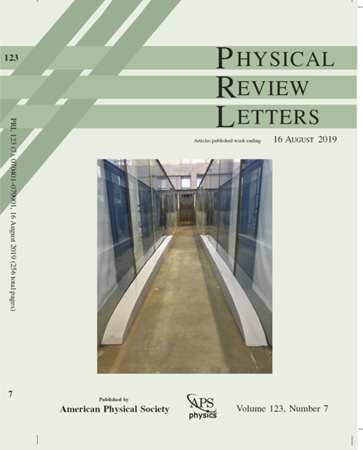无质量问题的混合SO(10)轴子模型
IF 9
1区 物理与天体物理
Q1 PHYSICS, MULTIDISCIPLINARY
引用次数: 0
摘要
通过Peccei-Quinn (PQ)机制解决强CP问题的不可见轴子模型通常存在由量子引力效应引起的质量问题,该问题违反了所有全局对称性。因此,这些模型需要对参数进行极端微调以保持一致性。本文提出了统一的SO(10)×U(1)规范模型中质量问题的新解,其中U(1)a是一个无异常的轴向规范对称。在这个装置中,PQ对称作为一种偶然的对称出现,它允许PQ破断规模达到7×1011 GeV,从而允许轴子成为宇宙暗物质。我们称其为混合轴子模型,因为它具有在流行的KSVZ和DFSZ轴子模型之间进行插值的独特特征。它对实验可测量的轴子与核子和电子耦合的预测不同于通常的模型,这是一个可以用来测试它的特征。此外,该模型不存在畴壁问题,为费米子质量和混合提供了一个现实的预测框架。2025年由美国物理学会出版本文章由计算机程序翻译,如有差异,请以英文原文为准。
Hybrid SO(10) Axion Model without Quality Problem
Invisible axion models that solve the strong CP problem via the Peccei-Quinn (PQ) mechanism typically have a quality problem that arises from quantum gravity effects which violate all global symmetries. These models therefore require extreme fine-tuning of parameters for consistency. We present a new solution to the quality problem in a unified SO ( 10 ) × U ( 1 ) a U ( 1 ) a 7 × 10 11 GeV Published by the American Physical Society 2025
求助全文
通过发布文献求助,成功后即可免费获取论文全文。
去求助
来源期刊

Physical review letters
物理-物理:综合
CiteScore
16.50
自引率
7.00%
发文量
2673
审稿时长
2.2 months
期刊介绍:
Physical review letters(PRL)covers the full range of applied, fundamental, and interdisciplinary physics research topics:
General physics, including statistical and quantum mechanics and quantum information
Gravitation, astrophysics, and cosmology
Elementary particles and fields
Nuclear physics
Atomic, molecular, and optical physics
Nonlinear dynamics, fluid dynamics, and classical optics
Plasma and beam physics
Condensed matter and materials physics
Polymers, soft matter, biological, climate and interdisciplinary physics, including networks
 求助内容:
求助内容: 应助结果提醒方式:
应助结果提醒方式:


